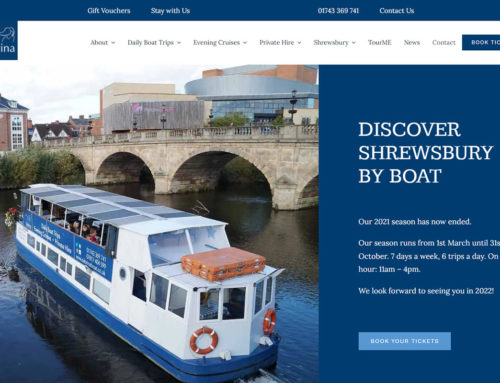The Ultimate Technical SEO Checklist
This technical SEO checklist is designed to help you make the most of your website. If you’ve not already submitted your details to our free technical SEO audit tool, then you should take a look. It costs nothing and reports are made by SEO experts with many years of experience.
So what is technical SEO?
Technical SEO is all about getting your house in order. It’s about cleaning up your website giving Google bots the best chance of indexing your whole site. So what can you do to give your website the best chance of ranking? Let’s start with the basics of how to conduct a technical SEO site audit.
Technical SEO Checklist: The Tools
Google Search Console & Bing Search Console
If you haven’t already signed up to Google Search Console (GSC), you should. Why? Because it gives valuable insight into the health of your website and it’s where you submit your sitemap.
A sitemap, if you don’t know, it’s like A to Z of your website. It tells Google what pages to show in the Search Engine Page Results (SERPs) and what to ignore.
So assuming you already have a Google account the first thing you want to do is add a Domain Property and verify it. One of the easiest ways to do this is to add a TXT record to your DNS records. Just head over to where you keep your Domain Name.
It usually takes a little time (up to 24 hours) so it’s best to come back and verify at a later date.
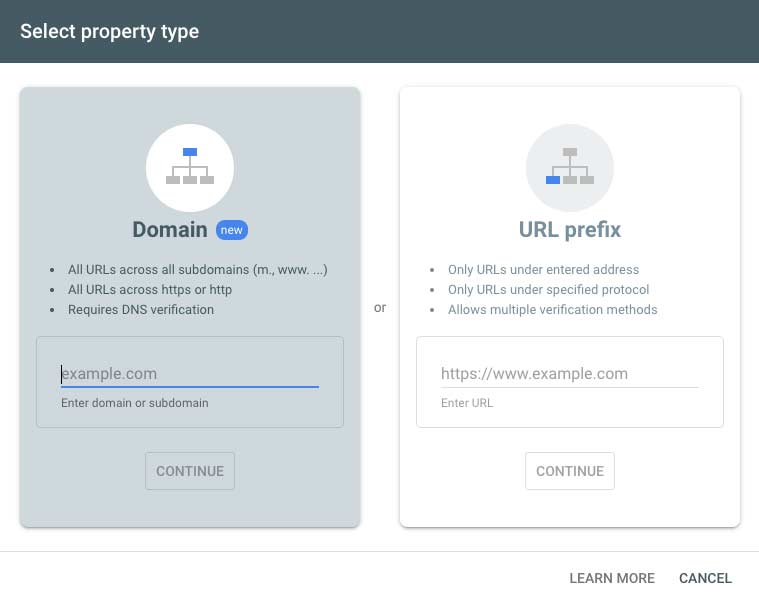
Once you’re inside then you have a wealth of tools at your disposal. As we mentioned, you can insert your sitemap.xml file here. You can also check for manual actions and security issues.
One of the big areas to check in Google Search Console is crawlability, you’ll find it under ‘Coverage’. It’s here you’ll find if pages aren’t being indexed correctly. Alternatively, there might be a sitemap error.
Over time you’ll be able to use the information in GSC to interrogate your website. There’s a wealth of data. It’s here that you can discover what pages on your site draw people in and why.
Bing Webmaster Tools
At the time of writing Bing currently holds a whopping 2.5% share of search engine usage, just below Google’s 92%. And you could ask yourself, is it really worth it?
Well, it’s actually on desktop and tablet Bing holds around 6% of the market share and 10% of the UK desktop search. So Bing is Google’s main search rival and is much more likely to be used by the 50+ age bracket.
But don’t fret. It’s really easy to set up Bing Search Console because they can sync all your Google info straight into their search console.
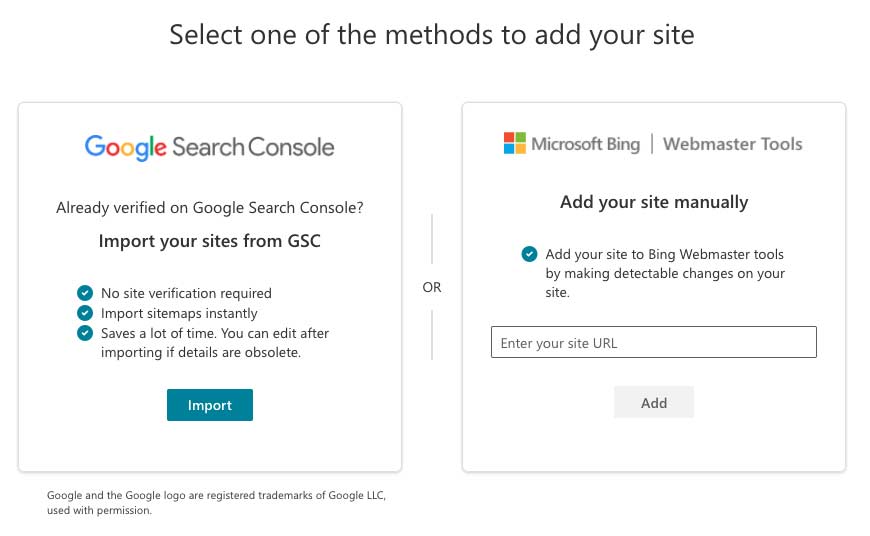
Google My Business
Google My Business is well known these days. It’s a must-do for any business operating on a local level. If you’ve not already claimed your business, do it. It takes around 4 days from completing a form to receiving your code, and that’s it.
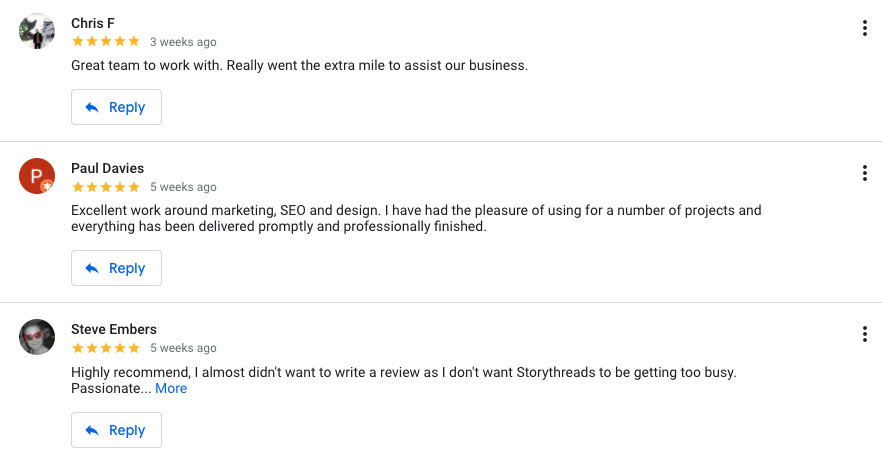
Once you’re live, you can add lots of information about your business, publish posts and much more. It’s advisable to be quite active on Google My Business. By doing so you’re giving the biggest search engine the thumbs up, we think they like that.
Want more information about getting to the top of the SERPs in your local area? Check out this article about Local SEO.
Google Analytics
Lots of people have Google Analytics already set up, but not many know what to make of it. That’s understandable. There’s a lot of data and it’s not that easy to read.
I like this article on how to use Google Analytics from Backlinko, it covers a lot of the key areas and is easy to digest.
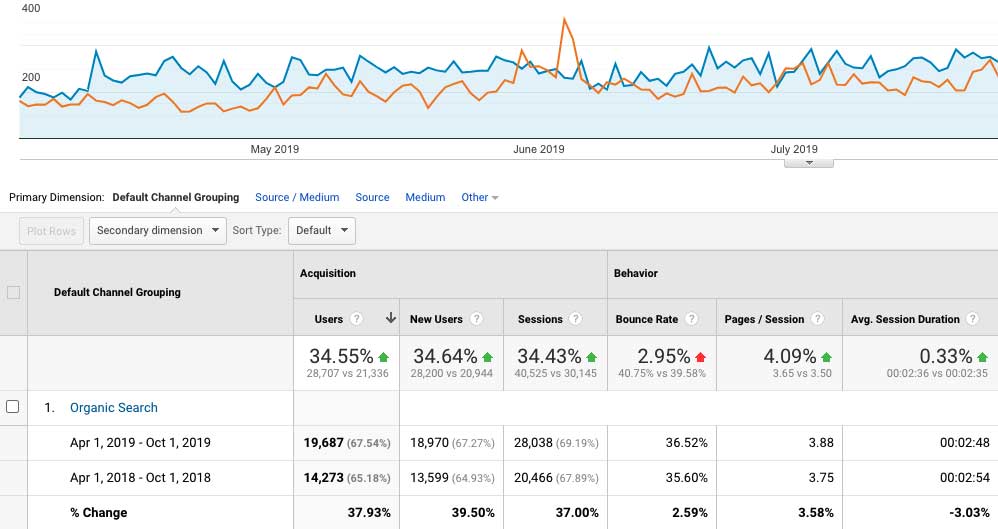
More on sitemaps
At StoryThreads we use a tool called Smartcrawl Pro to generate our sitemaps. What we love about it is how much control they offer you for which pages you want to index.
Sure there are free versions out there such as Yoast! Or Yoast! Premium but when you add in all the extras you get without the extra bloat. We think it’s a great buy.
Another great feature of this search engine tool is that it generates a robot.txt file that links to your sitemap file.
Why does this matter for technical SEO?
Well, the Robot.txt file tells search engine spiders how to crawl pages of a website. It’s like your very own spider escort. So telling the spider where to find your sitemap is very important. This is especially true if you make lots of updates.
SEO Evaluation
Competitor analysis
This seems fairly straightforward at first glance. SEO we can really pull out a lot of interesting information by looking at competitors. We use a technical SEO tool called SEMRUSH for our organic research. It helps us analyse what keywords our competitors are ranking for. It also shows the total volume of searches per month.
What’s more, we can identify the top pages on that site and backlink profile (who’s linking to that site), which pages are being linked to and the value of the link (sometimes referred to as link juice).
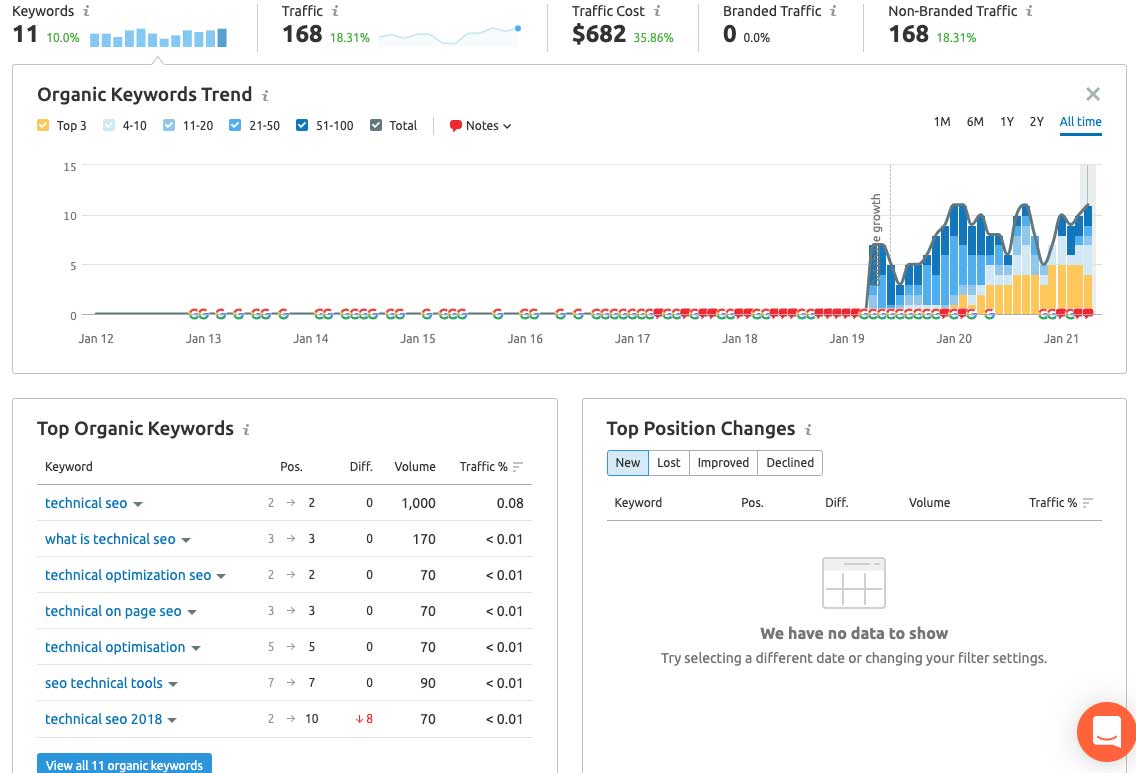
Valuable keyword analysis
There are good keywords and not so good keywords. Using a keyword analysis tool it’s possible to discover high-value keywords that are underperforming in the SERPS. These days it’s hard to spot a rare gem, but they are out there.
What you’re looking for on short-tail keywords is high volume, low competition. If there is lots of competition from big companies, it’s going to be tricky to get high enough in the rankings. If you’re a local company try adding a regional variant too.
But don’t worry, we also have long-tail keywords to consider.
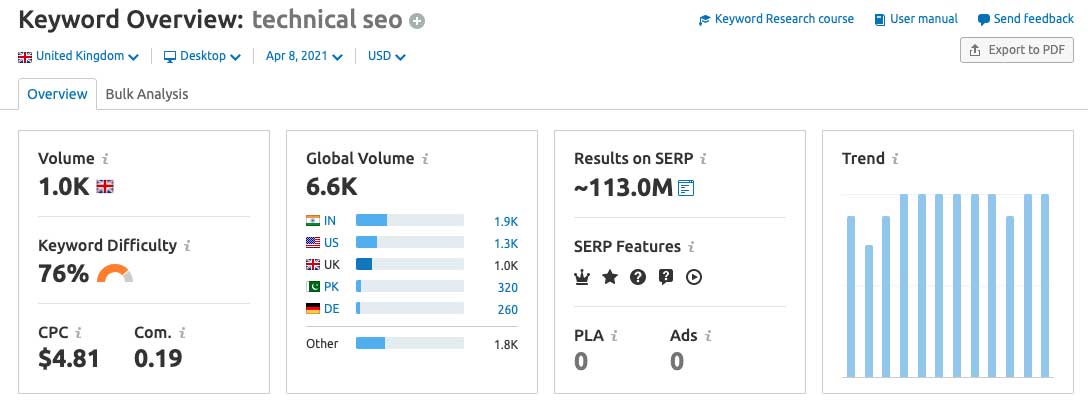
Long-tail keywords
Long-tail keywords are made up of a string of words and they often have low volumes in search. But don’t let that put you off. Big competitors rarely touch them. So it’s an open battleground.
Google indexes pages with long-tail keywords within their ‘People also ask’ SERP feature. This is partly down to the way people are searching, specifically around Voice Search Marketing. These long string phrases are more conversational, so it’s worth doing some analysis on them. Plus the competition is fairly low. If you do appear in a SERP feature, there’s a 3X increase in clickthrough on average, which massively benefits Conversion Rates.
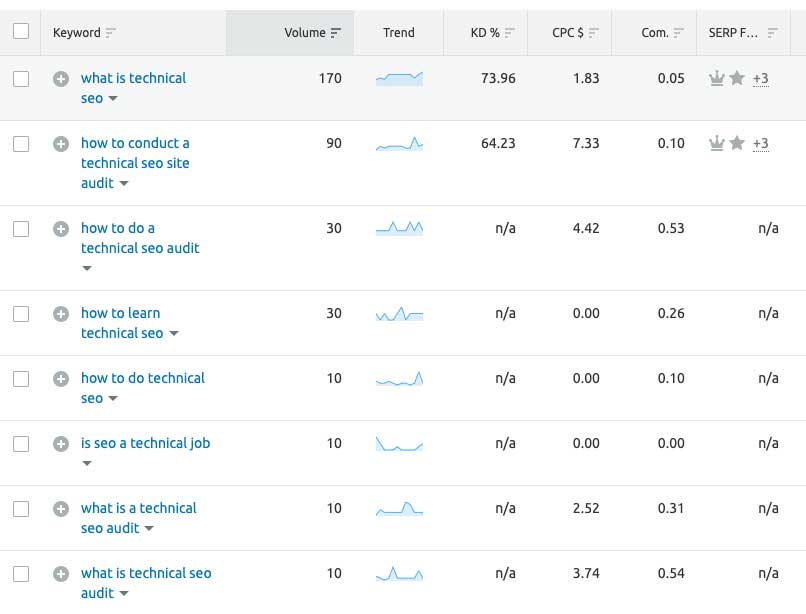
Building a content plan
Once you’ve got a big list of keywords, don’t fire off on all cylinders. The next step is to analyse what you’ve gained from your keyword research. Put together lists of common words, and then build out from there.
Sometimes you’ll find you already have a page that matches some of the keywords. Ask yourself, can I make that page stronger by adding additional content. The answer is most likely, yes.
For some of the random words and phrases you find, even the more competitive keywords, consider a focused article. Then deep dive again until you have a comprehensive list of words and phrases related to that article.
Technical SEO Analysis
Make sure your site is secure
You would not believe how many sites are still referencing HTTP not HTTPS. How to check your site is HTTPS secure, check to see if there’s a padlock in your browser’s URL bar. Even so, you can still find odd pages that aren’t’ secure.
Some people just don’t know there’s a problem. But others get stuck trying to find the culprit. Check images, check internal links, do a site search on Google to see if they’re indexing HTTP and not HTTPS.
Look for duplicate indexes in Google
Newer sites won’t experience this problem as much. But even so indexing multiple versions of a page causes cannibalisation. It causes Google to be confused over what page is a priority.
Imagine for a second that all these pages below exist in Google and each one took 1/4 of the share of visits. Google will pick one. It might not be the correct one either. See below the possible variants:
https://www.storythreads.co.uk
https://storythreads.co.uk
https://www.storythreads.co.uk
https://storythreads.co.uk
What’s more, the links above tell a story. It’s likely that unsecured HTTP pages are being referenced somewhere on your site. The same applies if you decided to drop the WWW prefix when using HTTPS. Something somewhere is creating the problem. The best practice is to put that problem to bed.
Site speed
Site speed is becoming the mecca of technical SEO as SEO experts scramble to keep up with the ever-changing expectations of Google.
We prefer GTMetrix for doing site speed tests. The waterfall feature gives a by the millisecond view of how your website renders and if anything is causing delays. This is an advanced area and we suggest speaking with an expert before tackling it.
Mobile speed will continue to push to the forefront of Technical SEO. Here’s how you can check to see if you meet Google’s mobile-friendly website requirements.
Internal link analysis
Broken links are a sign that your website is not optimised for user experience (UX). You know how frustrating it is to click on a dead link. When Google’s spiders’ index your site, if they hit a dead link too many times they bounce off.
The same thing applies to external links from your site to other pages. So either find the new URL or remove the link.
Start thinking about a good internal link building strategy. This handy guide covers the key fundamentals of link building for SEO.
While we’re on with links, let’s talk about 404 and 401 redirects.
Redirected links
Permanent redirects (301) and temporary redirects (302) are not long-term solutions to improving your site structure.
What you end up with is a crazy redirect loop that kills search crawlers on your sites. It is OK to use redirects but we suggest using temporary redirects in the short term.
But first, check to see if you have links to that page within your website. If you do, then change them.
Second check to see if that page is in Google’s index. If it’s not, then that’s good news. If it is, then you’ll want to push to remove that page from Google’s index. Make sure that your replacement page (if there is one) is being indexed too. A 302 temporary redirect is a good choice here.
But what about if you have people linking to your old page. Well, then there’s a good reason for a 302, and even a 301. It all depends if you can obtain a change of URL from the site that links to yours. Now if the link is of high value, contacting the owner of the site or content is a good shout. If you can’t reach them and the link value is high a permanent redirect might be your only option.
SEO-friendly URLs
An SEO-friendly URL is one that helps the user understand what the content on the page is about. Take for instance:
https://storythreads.co.uk/services/seo
It’s easy to understand what that page is all about. Now take this one
https://storythreads.co.uk/category.php?id=42
It’s difficult for anyone to know what the second URL relates to.
Whatever you do separate each word with a hyphen, not an underscore and secondly, keep the URL short. For more information on URL structure, Backlinko did this helpful study to illustrate these points.
Structured data
Structured data is a guide created to make your site easily understandable to search engines. You may hear people talking about technical SEO schema. It’s the vocabulary used to describe your site to the search engines is defined by Schema.org. In essence, it turns content into code that is easily processed. Search engines take that code and display the results in a specific way.
Recipes are a good example. Adding a recipe schema doesn’t just add a description, it adds the time it takes to cook the food, calories and a five-star rating. We call this additional information ‘rich results’, and that’s where you get ‘rich snippets’ from.
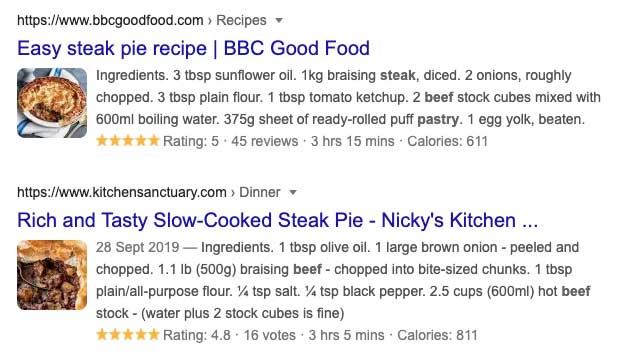
There are lots of different ways to use Structured Data. Thankfully Google has created this guide to help you choose the best schema markup for your site.
If this is all WAY OVER YOUR HEAD, don’t worry. You can use Smartcrawl Pro or Yoast and they’ll take care of the complex coding for you. If you want to check that everything has been completed correctly, then our friends at Google have a structured data testing tool.
Click depth
Structured data is a guide created to make your site easily understandable to search engines. You may hear people talking about technical SEO schema. It’s the vocabulary used to describe your site to the search engines is defined by Schema.org. In essence, it turns content into code that is easily processed. Search engines take that code and display the results in a specific way.
Recipes are a good example. Adding a recipe schema doesn’t just add a description, it adds the time it takes to cook the food, calories and a five-star rating. We call this additional information ‘rich results’, and that’s where you get ‘rich snippets’ from.
Onpage SEO Evaluation
Meta housekeeping – Title tags
Titles tags are the first place an SEO expert will modify, they’re often ignored. Optimising your title still makes a big difference for page ranking. It’s really important to make sure you don’t have titles that are truncated (too long that they don’t display in the SERPs).
Also avoid having duplicate title tags on your site, that will confuse the search engines. There’s a big issue with keyword cannibalisation on websites. If you do so, you risk sharing your search result position between two or more pages. That means you’ll struggle to achieve page one results.
Onpage SEO Evaluation
Title tags
Titles tags are the first place an SEO expert will modify, they’re often ignored. Optimising your title still makes a big difference for page ranking. It’s really important to make sure you don’t have titles that are truncated (too long that they don’t display in the SERPs).
Also avoid having duplicate title tags on your site, that will confuse the search engines. There’s a big issue with keyword cannibalisation on websites. If you do so, you risk sharing your search result position between two or more pages. That means you’ll struggle to achieve page one results.
Meta descriptions
Meta descriptions haven’t had a direct ranking factor for a long time, but they do affect your click-through rate. The description tells people why they should click on your listing and not another page. They also explain the page content. If the meta description is misleading the visitor is likely to leave the site quickly and this impacts Google’s user experience metric.
Consolidate low-quality content
SEOs these days are thinning down site content. That means removing low ranking content and building higher-value content through consolidation. Inside Google Search Console, take a look at the Performance page. In there you’ll find a tab called Queries. From here you can see what pages are showing click-through rates and impressions.
If you have a high impression rate but low clickthrough rates, consider changing your meta description. For content with low impressions and low click-through rates, it could be that you need to modify the content. Consider consolidating with another page to add more value to potential visitors.
If you merge this data with your Google Analytics data you’ll discover even more insight. For example, content that has a long dwell time (time on page) but fails to do well in organic search.
Image optimisation
Often misunderstood, image optimisation is about making sure the image has an appropriate tag related to the content. The Alt Tag is designed for accessibility. It explains what the image portrays and is used for describing images to those who are blind or partially sighted.
Image size and quality are also important. From a site speed perspective, huge image size in both pixels and file size will impact your site speed rating. A pixelated image or one that’s too small affects your user experience.
Advanced backlinking
We’ve already mentioned looking at competitor sites for backlinking opportunities. Another way to gain backlinks is to take advantage of brand mentions. If there’s an opportunity to ask for a backlink because someone mentioned your brand, take it.
More importantly, our final point in this Technical SEO checklist to keep monitoring your sites backlink health. Sometimes backlinks drop off, which could be due to a site change at your side or theirs. Keep a lookout, especially for lost high-value backlinks. They can hold a lot of weight in the world of SEO.
At the opposite end of the spectrum are spam backlinks. Instead of bolstering your hard work, they do the opposite.

